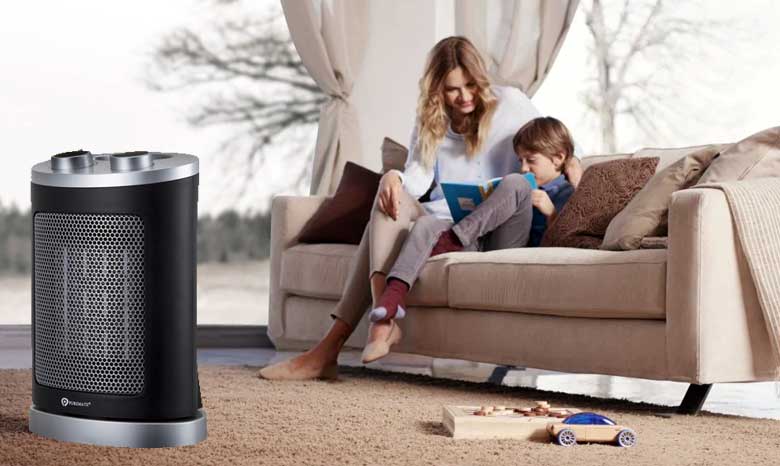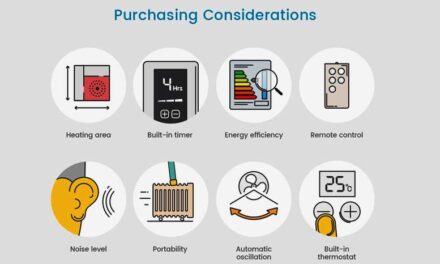Living in the UK, reliable heating is essential. Most houses now have central heating, but some families still rely on an electric heater. Additionally, an electric heater is good for backup heating. However, if the fire stops working it can cause problems.
There are some common faults which can cause electric heaters to stop working. You can check to see if you can fix your heater before you decide to ring the repairman or replace the fire. However, it is important to understand that you should never try to repair or take apart any electrical appliance unless it has been switched off and unplugged from the mains.
Types of Electric Heaters
There are three main types of electric heaters; Radiant Heaters which have bars, Fan Heaters and Convector Heaters which throw out hot air. Some appliances combine the two types; radiant and convector and in these models, there will be radiant bars which are in front of a reflector. These push the heat into the room and the convector at the top of the appliance which also distributes hot air.
Convectors are better as background heating while radiant bars give direct heat. The fan heater has a motor that pushes out hot air to a wider area of the room.
Common Reasons for Broken Electric Heaters
One of the most common problems with all types of electric heating is the main lead. If this is worn or has been damaged by heat the outer casing may become cracked and this can not only cause problems but can be very dangerous.
Experts advise that a worn power cable should always be replaced and not repaired with tape. The lead is usually attached to the heater at the rear, and it is a simple job to remove the outer cover and release the clamp that holds the lead.
Unscrew the terminals and put the new leadership in place. Always ensure that the lead is the correct power rating. If in doubt call an electrician.
Radiant Heaters
Traditional Bars and Silicon Glass Tubes
You can buy radiant heaters with either regular pencil bars or silica glass tubes. The pencil bars consist of an element that has closely wound wires running through the bar. Most of these elements have caps at each end where the terminals are fitted.
An older type of fire will have radiant bars, but most modern appliances now have silica glass tubes. The latest tubes have a more attractive appearance and give out more heat than traditional bars. However, they are more easily damaged and may soon become discoloured with marks and dust. Keeping this type of element clean will help the appliance to give out the best performance.
At the back of the fire, there is a reflective screen that must be kept clean. To do this, you will need to remove the elements. You should only ever do this when they are cool. Use a clean, soft cloth that will provide protection for the delicate glass tubes. If you leave behind fingerprints, these will become burned into the glass once the fire is switched on. This can impair the performance of the fire.
Burnt Out Terminals
When the terminals at each end of the radiant bars become worn, they can start to spark. When this happens, it is too late to replace the bars. If the bar is not fitted correctly, arcing can occur i.e. if the bar is too loose. Slightly worn terminals may be treated with emery cloth to smooth out any slight burn or corrosion that has built up. If in doubt always call an electrician or buy a new fire.
Convector Heaters
Safety Rules for Convector Heaters
Convector heaters are an excellent source of background heat. Also, there is very little risk of anything or anyone getting burned because the heat is not direct as it is with radiant fires. However, you should always follow these safety precautions when using convector heaters.
Don’t put convector heaters in bathrooms or any place where there is condensation or dampness. You must never place clothes over the heater to dry as this can lead to the element overheating and failing.
Thermostats and Replacement Parts for A Convector Heater
A convector heater with a thermostat is the best choice. This type of heater regulates the amount of heat that is distributed and allows the temperature in the room to remain constant. If the thermostat stops working, you can buy a new one from the supplier. However, if the heater is very old, it is unlikely that parts will still be available.
A new convector heater will come with a user manual which will advise you about replacement parts. If the heater is not working, you should first check the power supply, then look to see if the indicator light is on and that the thermostat is set high enough to start the heat.
There is very little that can go wrong with a convector heater. A fault will usually lie with the thermostat which you can replace. The heating element can also fail. New convector heaters are very cheap to buy so if the element is gone it is usually more cost-effective to buy a new heater which can cost as little as £20.
Fan Heaters
A fan heater has an element inside and a fan that distributes the hot air into the room. If the fan motor is not running at the correct speed, it can cause overheating. This is the main reason why a fan heater might fail.
You can easily remove the casing on a fan heater so that you can clean away any build-up of dust on the motor. Just unscrew the outer casing and then use a clean, dry paintbrush to clean the fan, motor and internal switches. Apply a tiny drop of very light oil to the bearings, and this will help to keep all parts moving.



